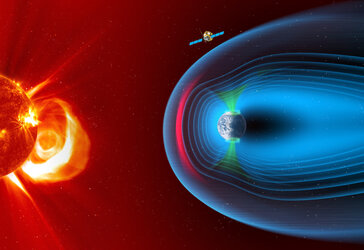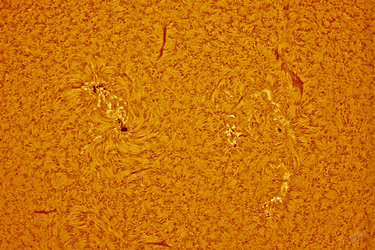Smile factsheet
Overview of the Smile mission
Name: Smile (Solar wind Magnetosphere Ionosphere Link Explorer)
Status: All parts of the Smile spacecraft are currently at ESA’s technical heart (ESTEC) in the Netherlands. In January 2025, engineers joined together the two main elements, making it complete for the first time. During 2025, they tested the whole spacecraft to make sure it is ready for the tough space environment. In October 2025, Smile passed its qualification and flight acceptance review, confirming that it is ready for launch.
The launch window is set for 8 April – 7 May 2026. Smile is scheduled to leave ESTEC in February 2026, from where it will travel to Europe's Spaceport in French Guiana.
Mission objectives: Earth is constantly bombarded by gentle streams – and occasionally stormy bursts – of charged particles from the Sun. Luckily, a massive magnetic shield called the magnetosphere stops most of these particles from reaching us. If it weren’t for the magnetosphere, life could not survive on planet Earth.
Smile will give humankind its first complete look at how the magnetosphere reacts to the material that the Sun sends in our direction. By improving our understanding of the solar wind, solar storms and space weather, Smile will fill a stark gap in our understanding of the Solar System and help keep our technology and astronauts safe in the future.

How is Smile unique?: Although several spacecraft have observed the effects of the solar wind and coronal mass ejections on Earth's magnetic shield, they have mostly studied local processes and individual space weather events – we could call them ‘detail-oriented’ missions. Smile is the opposite: thanks to its wide-field X-ray and ultraviolet vision, it will be the first mission to get a truly global picture of the interaction between the Sun and Earth.
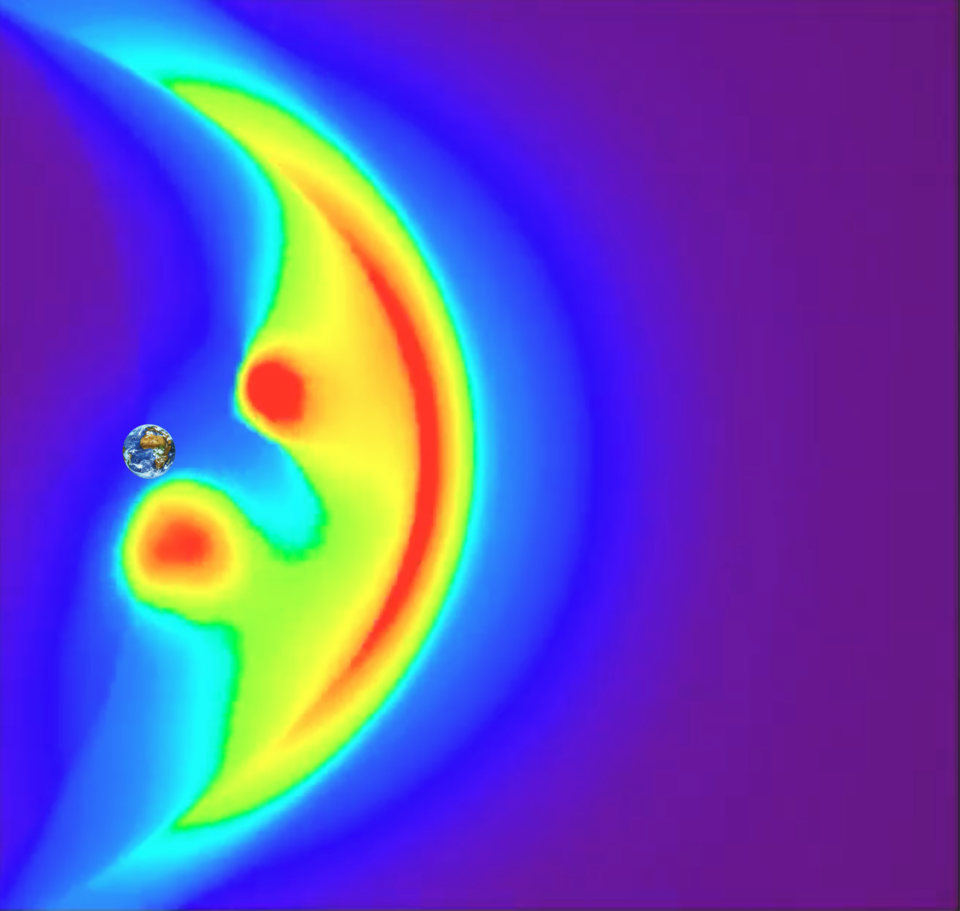
Until recently, we thought we needed to develop multi-satellite missions to get a global perspective on the Sun-Earth connection. This meant we were limited by financial and technical constraints of creating such complex missions. However, ESA’s XMM-Newton X-ray telescope and the earlier ROSAT mission, have revealed a new way to look at the magnetosphere, which will be put to the test by Smile for the first time. The novel method is based on a process known as ‘solar wind charge exchange’ – detected through the X-ray light emitted when charged solar wind particles interact with neutral particles in Earth’s upper atmosphere or ‘geocorona’.
Smile will be the first mission to make detailed and long-running X-ray observations of Earth’s magnetosphere in X-ray light, revealing exactly when, where and how the solar wind interacts with Earth’s magnetic environment. The image above right is a simulation showing what we expect to see with Smile’s X-ray camera – and reveals the smiley face responsible for the mission’s name! The ‘smile’ is the edge of the magnetosphere facing the Sun, and the two ‘eyes’ are the magnetic holes at Earth’s north and south poles.
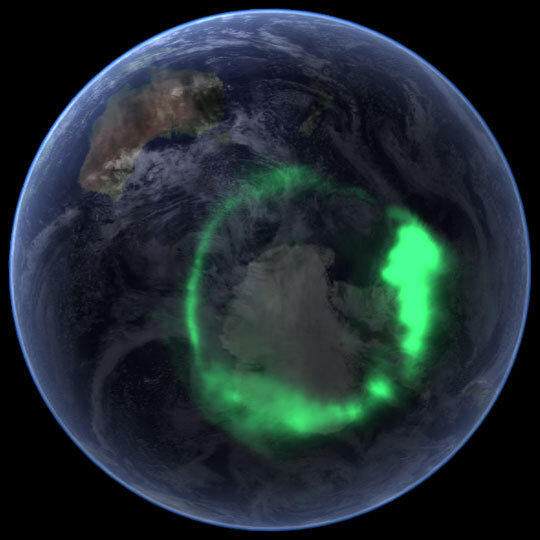
To complement this clever X-ray imaging, Smile will continuously image the northern and southern lights in ultraviolet light. The auroras dance across the sky when charged particles from the Sun are channelled down Earth’s magnetic field lines towards the poles. They constantly change location and brightness, which gives us extra information about how the entire magnetosphere is responding to the solar wind.
Smile will observe the northern lights non-stop for more than 40 hours at a time for the first time ever. These kind of data have been missing since 2008.
Smile also marks the first time that ESA and China have jointly selected, designed, implemented, launched and operated a space mission.
Key question(s): Smile will address a key theme of ESA's Cosmic Vision 2015–2025: how does the Solar System work? Within this theme, Smile will specifically improve our understanding of space weather and solar storms – essential to protect both space-based technology and the lives of any humans in orbit around the Earth
More specifically, Smile will address three fundamental queries that remain unclear due to a lack of available data:
- What happens where the solar wind meets Earth’s magnetic shield?
- What causes magnetic glitches on the dark side of Earth?
- How can we predict the most dangerous magnetic storms earlier?
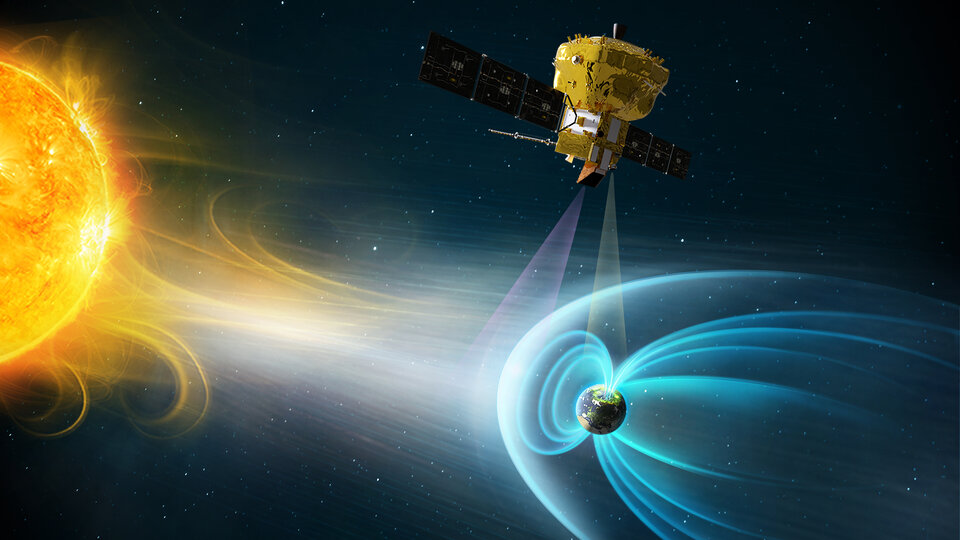
Collaboration: Smile is a joint European–Chinese mission. ESA is responsible for the payload module (carrying the scientific instruments), the launch vehicle, one of the scientific instruments and part of the science operations. The Chinese Academy of Sciences (CAS) is responsible for three scientific instruments, the platform, and the mission and science operations.
Launch: Scheduled for launch in spring 2026 from Europe’s Spaceport in French Guiana, onboard a Vega-C rocket
Nominal mission lifetime: Three years to achieve its science goals
Orbit: Smile will be placed in a highly inclined, highly elliptical orbit around Earth
Development: Smile was selected from a pool of 13 potential missions that were proposed under a joint ESA-CAS call for mission concepts in 2015. The mission entered its study phase at the beginning of 2016 and has been in implementation since 2019, following adoption by ESA’s Science Programme Committee. During the implementation phase, the mission has been designed, developed and tested as a joint effort between ESA and CAS both in Europe and China.
Spacecraft: Smile is three-axis-stabilised, has one main 490-newton engine and weighs 2.3 tons, including 1.6 tons of propellant to reach its scientific orbit after launch. The spacecraft has two deployable solar arrays. It carries two star trackers and twelve 10-newton thrusters for attitude control, and has two antennas to transmit telecommands, spacecraft housekeeping and science data to the ground station. In launch configuration, the payload module is stacked atop the spacecraft platform and sits 3 m tall.
Instruments: Smile will make clear and quasi-continuous observations of key regions in near-Earth space with both remote-sensing and in situ instruments. The spacecraft carries four instruments:
| Smile's instruments | |
|
LIA Light ion analyser |
MAG Magnetometer |
|
SXI Soft X-ray imager |
UVI Ultraviolet aurora imager |
UVI, SXI and MAG are mounted on the payload module, with MAG’s sensors mounted 80 cm apart at the end of a deployable 3-m-long boom. The two LIA sensors are mounted on the main spacecraft platform. The four instruments together weigh 70 kg.
Legacy: Smile builds upon findings and studies by ESA satellites such as Cluster and XMM-Newton
Smile mission facts
Smile will gather up to 45 hours per orbit of continuous observations in soft X-rays and ultraviolet wavelengths, including simultaneous images and videos.
Smile’s orbit will take it as far as 121 000 km from Earth above the North Pole (nearly one-third of the way to the Moon, and far enough from Earth to allow Smile to image the Sun-facing edge of Earth’s magnetic field).
Smile is funded by all ESA Member States. Through the payload module (led by Airbus Defence & Space on behalf of ESA) and SXI instrument (led by the University of Leicester on behalf of ESA), 14 European countries contribute more directly to the mission.
Over 250 European and Chinese scientists make up the Smile scientific consortium. These scientists are working on the mission’s science goals, developing its four science instruments and carrying out the scientific data analysis.
The spacecraft assembly, integration and testing took place at ESTEC, ESA’s technical heart in the Netherlands.
Smile will send down its science data mainly to the O'Higgins Antarctic ground station operated by the German Aerospace Center (DLR), and the Sanya ground-station in China.
When the four 380-litre fuel tanks are full, the total weight of the platform-payload stack will be around 2300 kg.



